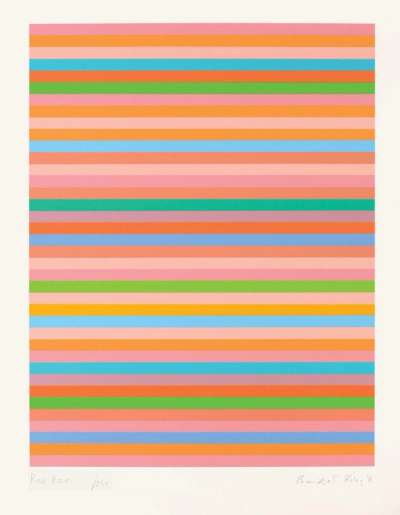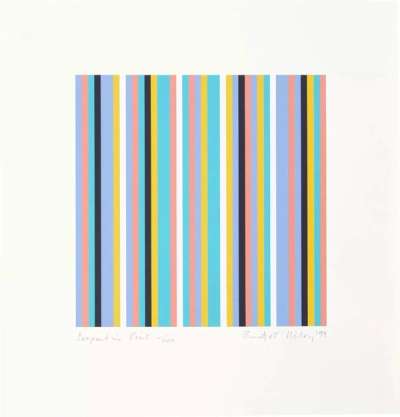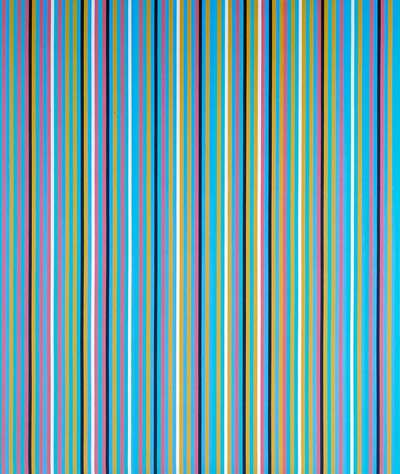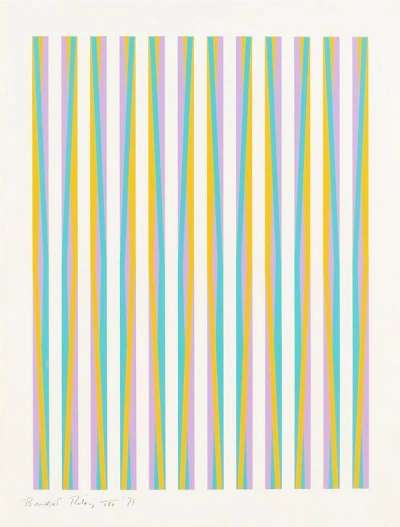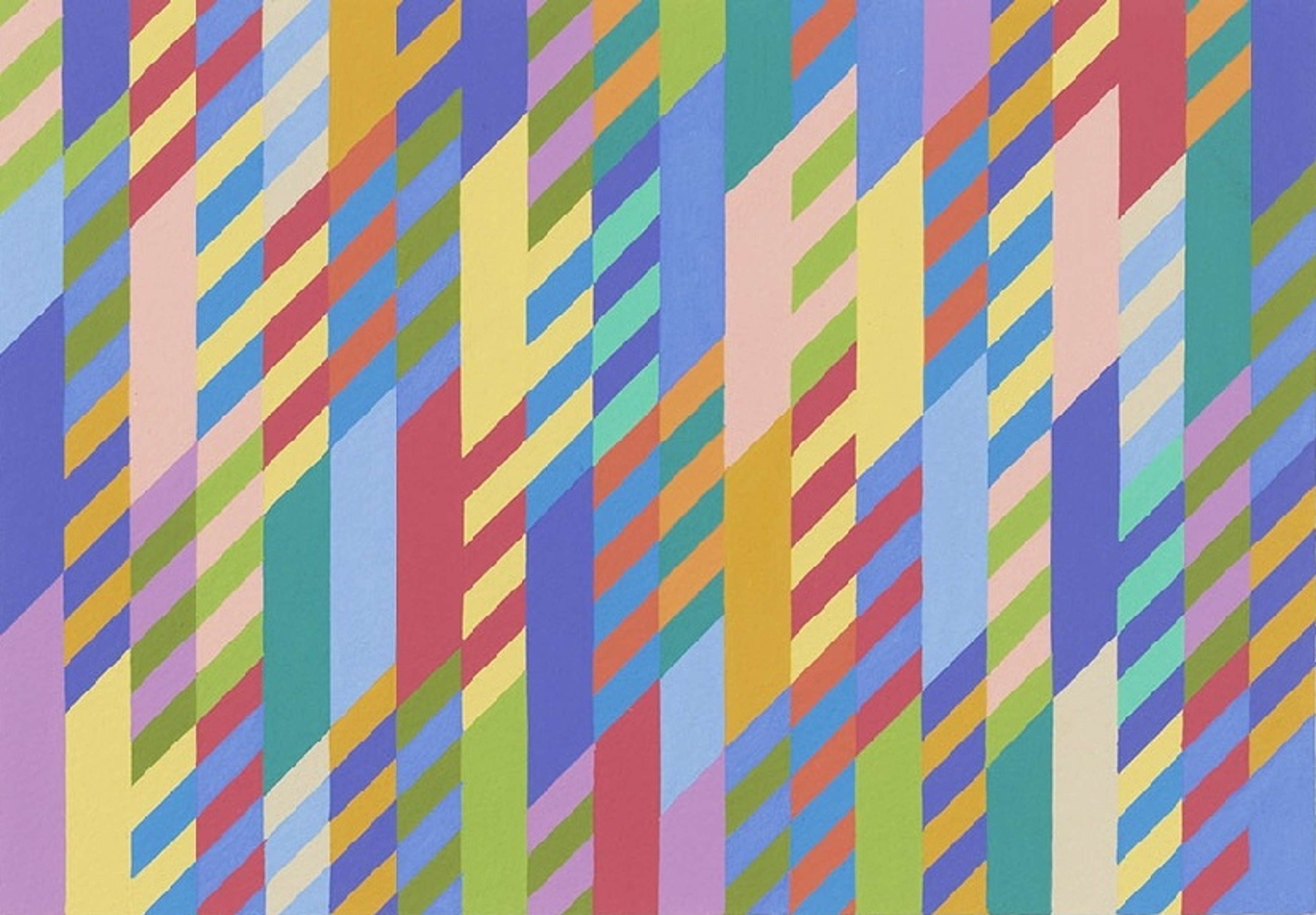 Firebird © Bridget Riley 1971
Firebird © Bridget Riley 1971
Bridget Riley
111 works
The Stripes print series was created by Bridget Riley in 1965. It is an example of her exploration of colour and form and represents her Op Art style.
Stripes is about the relationship between the complex and the simple
 Rose Rose by Bridget Riley, 2011
Rose Rose by Bridget Riley, 2011Stripes implores the viewer to look carefully and closely. This series succinctly represents Riley’s philosophy - that complexity lurks beneath the surface of simplicity, if only we take the time to notice.
Riley introduced colour into her work from 1967
 Serpentine by Bridget Riley, 1999
Serpentine by Bridget Riley, 1999Riley introduced colour into her previously black and white works in 1967 with her Stripes works, expanding the perceptual and optical possibilities of her compositions.
Some of Riley's colour palettes were inspired by her travels
 Achaean by Bridget Riley, 1981
Achaean by Bridget Riley, 1981Riley expanded her colour palette as she travelled: conceiving the well-known Egyptian palette (Anchaen, 1981), inspired by her travels there.
This series has endured as iconic in Riley's career
 Rose Horizontal by Bridget Riley, 2018
Rose Horizontal by Bridget Riley, 2018Having used an array of geometric forms to pursue vibrating movement throughout her artistic career, Riley’s stripes - horizontal, vertical or diagonal, have endured.
Riley first rose to fame in 1965
 And About by Bridget Riley, 2011
And About by Bridget Riley, 2011Riley rose to international fame following the 1965 exhibition The Representative Eye at the Museum of Modern art in New York.
Riley represented the UK at the Venice Biennale
 Edge of Light by Bridget Riley, 1981
Edge of Light by Bridget Riley, 1981In 1968, Riley represented the UK at the 34th Venice Biennale, where she was also the first living British painter to win the prestigious International Prize for Painting.
Riley has commented on the simplicity of this work
 Brouillard by Bridget Riley, 1981
Brouillard by Bridget Riley, 1981On the simplicity of the forms, Riley stated: “If I want to make colour a central issue, I had to give up the complexities of form with which I had been working. In the straight line I had one of the most fundamental forms”.
These works should be read from left to right
 Firebird by Bridget Riley, 1971
Firebird by Bridget Riley, 1971The lines are uniform: of equal density and at regular intervals. Riley has suggested that these horizontally-striped works should be read from left to right to best appreciate the variations in colour between warmer and cooler hues.
These works explore abstraction
 Light Between by Bridget Riley, 1982
Light Between by Bridget Riley, 1982Non-representational in their degree of abstraction , Riley’s titles enable the viewer to discover and understand what experiences or moments underpin each Stripes painting.
The stripes allowed Riley to explore colour in depth
 Silvered 2 by Bridget Riley, 1981
Silvered 2 by Bridget Riley, 1981The stability offered by repetitive stripes was essential for Riley’s in-depth explorations of colour.
Riley was inspired by many artists
 Two Blues by Bridget Riley, 2003
Two Blues by Bridget Riley, 2003As many artists before Riley, such as Seurat, Sonia Delaunay and Josef Albers, discovered, colours evoke emotional responses. Therefore, colour combinations can vibrate and produce alternating effects in their viewer. Hence, Riley’s Stripe prints stand as powerful manifestations of the artist’s life-long commitment to exploring colour, shape and form.


